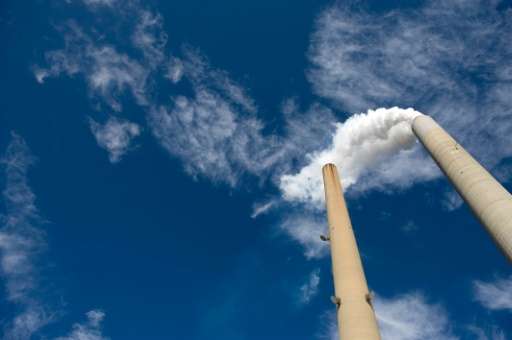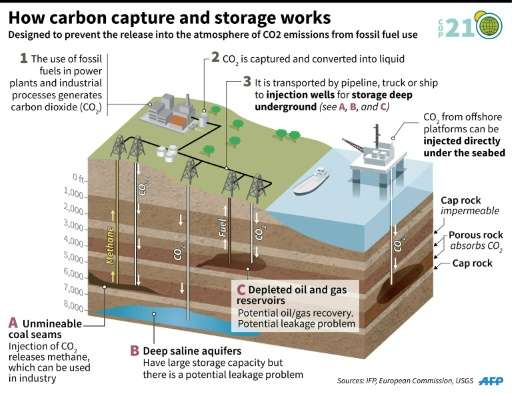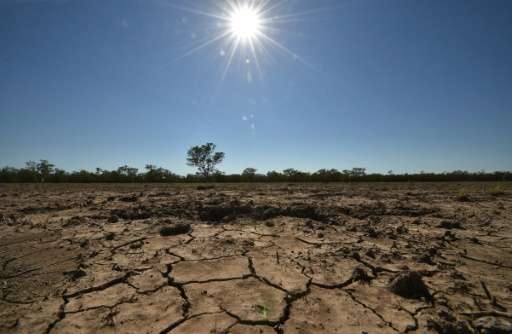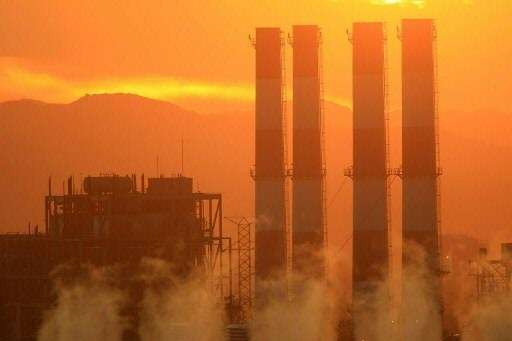Carbon Capture: key green technology shackled by costs

Every credible plan to save humanity from global warming reserves a key role for a green energy technology called carbon capture and storage.
But there's a problem: no one has figured out a viable way to pay for it.
Usually just called CCS, the technology can take carbon dioxide—the dominant greenhouse gas—from major pollution sources such as power plants or steel mills and pump it deep underground, out of harm's way.
CCS is crucial to many scenarios—including from the United Nation's climate science panel—for keeping global warming under 2 degrees Celsius (3.6 degrees Fahrenheit), considered the red line for catastrophic climate impacts.
But despite decades of testing, only a handful of the projects are actually in service.
One of the main reasons, experts say, is a very hefty price tag that has kept nervous investors at bay.
"There are 22 large-scale (CCS) operations in the world," said Isabelle Czernichowski-Lauriol, president emeritus of CO2GeoNet, a European research network.
"We need to have over 1,000," she told AFP.
"There has been a delay in regards to what was expected, but it has mostly been due to the lack of an economic model."
Catching, transporting and storing just a fraction of the world's carbon emissions would require the construction of a massive new industry.
'Cost is main barrier'
CCS works by compressing a gas, CO2, into a liquid form and pumping it into the ground.

Scientist and analyst Vaclav Smil, a respected voice on environmental and energy matters, has calculated that a CCS infrastructure—to capture and store 20 percent of the world's CO2 from burning fossil fuels—would need a capacity 70 percent larger than the petroleum flow handled by the global crude oil industry.
The scale of effort needed for any substantial reduction of emissions and the operating costs "combine to guarantee very slow progress," he wrote.
At the moment, Canada's Boundary Dam power station in Saskatchewan is the world's only commercial-scale coal-fired power plant that uses carbon capture to keep its emissions out of the air.
It is designed to grab 90 percent of the plant's CO2 gases—the equivalent of the pollution from 250,000 cars—which are then sold and pumped to nearby facilities for use in squeezing oil out of the ground.
Sale of the gas provides extra revenue for the station, which cost 1.5 billion Canadian dollars (one billion euros) to build. About a sixth came from government subsidies.
"Cost is one of the main barriers to CCS," said Samuela Bassi, a policy analyst at the London School of Economics and Political Science. "Building these plants is expensive."
Adding carbon capture technology to coal-fired power plants pushes up their cost by 40-80 percent, and by up to 50 percent for natural gas-burning stations.
Dearth of projects
One reason carbon capture is so expensive is the technology is relatively new as a climate change solution—about a decade old—and some of the projects are one-of-a-kind.
A developing technology without a proven, viable business model is also seen as risky by investors, driving up the cost of borrowing money, analysts said.

Further handicapping CCS, a lot of government subsidies—and regulatory support—are going to competing technologies such as wind and solar.
"For CCS you don't yet have this type of system in place, except in the UK," said Bassi. "But in the rest of the world you don't have that kind of economic support."
Analysts say the cost of CCS-equipped power plants will come down significantly as more projects get built and the technology is refined.
However, just two carbon capture-equipped, industrial-scale power plants—both in the United States—are due to come online next year, and there are a dearth of big projects on the drawing board.
There are 22 large-scale CCS projects that are either in operation or are slated to be up and running by 2017.

Another 23 big projects currently in various stages of development are "maybes", according to a spokesman for the Global Carbon Capture and Storage Institute, an industry group.
That total number of industrial-scale projects—45—is an 18-percent decrease over the 55 listed in the institute's 2014 report.
EU targets have called for the equivalent of 11 large-scale, CCS-equipped power plants by 2030, which would cost up to 35 billion euros ($40 billion), according to the Grantham Research Institute on Climate Change and the Environment.
So far 1.3 billion euros in public funds have been, or are being, spent on developing these projects.
© 2015 AFP




















